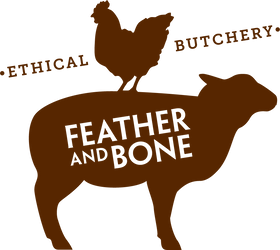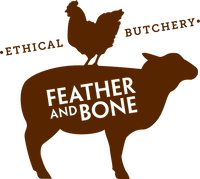Response to ABC's CO2 pig slaughter reports
You may have seen the disturbing footage of pigs during routine CO2 gas stunning at three Victorian abattoirs that was aired on ABC’s 7.30 Report on 27th March and 26th April?
In response to the many queries we’ve received from customers and in keeping with our long-standing commitment to transparency, here’s what we know and where we stand on this issue.
CO2 stunning of livestock prior to slaughter is an approved, regulated procedure in Australian abattoirs, but there’s no mandate requiring CCTV in abattoirs so it’s not always easy to see what’s going on. This footage was given to the ABC by Animals Australia and procured surreptitiously by activists who presumably targeted abattoirs that they knew were failing to meet acceptable welfare standards.
The concerns raised by the footage relate to the treatment of the pigs prior to and during the CO2 stunning at the Victorian abattoirs and the bigger question of whether or not CO2 stunning should be permissible in Australian abattoirs at all.
CO2 is an aversive gas, discernible in high concentrations, which means that animals detect the gas about 9 seconds before they’re rendered unconscious. It’s in these few seconds that pigs, particularly if they’re already distressed by poor handling, will try to escape, but it’s always been our understanding that extreme distress responses are the exception.
The footage has prompted several complaints and investigations into these abattoirs and the ABC reports that one facility has since ceased operating as an abattoir.
At the time of writing, the pigs we receive are all killed at abattoirs using CO2 in the stunning process. We wish it was otherwise, but almost every abattoir in Australia uses this method for small to medium-sized pigs.
The abattoirs used by the farmers we represent are Cowra Abattoir, Benalla Abattoir and Booyong Abattoir.
As you know, our farmers prioritise animal welfare and take great care in the transportation of their animals from the farm to the abattoir to reduce stress as much as possible, including ensuring they don’t mix with unfamiliar pigs and don’t spend extended times in holding pens outside the abattoir. They also work hard to build strong relationships with the abattoir managers and keep a close eye on the way animals are handled.
There are some abattoirs where electric stunning or captive bolt stunning is used for small to medium-sized pigs, but they are the exception. Even when farmers might prefer to send their animals to an alternative facility they may not have a choice because there is no viable alternative within a reasonable distance. This is due to the extensive consolidation in the meat processing industry over the last 50 years, which has led to fewer, bigger abattoirs focussed on the profitable export market.
We can choose the farmers we work with, but it’s much harder for the farmers to choose the abattoirs.
Over the 17 years we've been running Feather and Bone, we've worked with many different farms and abattoirs, most of which are run by decent, professional people. But, while Australian standards for livestock slaughter are considered among the highest in the world, there is a gap between consumer expectations of animal welfare and the regulations which govern the meat processing industry.
The same could be said about the entire conventional livestock industry in Australia which we consider to be unacceptably intensive, unhealthy and compromised.
For 17 years we've advocated for a more humane and sustainable food industry, from the farm to the abattoir to the retailer. We devoted a chapter of our book, The Ethical Omnivore, published in 2020, to the contentious subject of slaughter because, no matter how tempting it is to avert our gaze, we all bear responsibility for engaging honestly and compassionately with the realities of life and death.
It’s incumbent on anyone who eats meat to look at the way animals are raised and killed and, if you don’t think it’s good enough, then raise your voice and demand better.
At Feather and Bone, our job is to provide a viable, commercial market both for farmers who are running humane and regenerative farms and for consumers looking for clean, ethical food. The more we can demonstrate that this model works and educate and encourage consumers to engage and support regenerative farmers, the more likely other farmers are to eschew intensive production in favour of a regenerative practice - an outcome that benefits everyone.
We could refuse to sell pigs killed at abattoirs using CO2, but that would disadvantage the pastured pig farmers who are working hard to build precious fertility, resilience and biodiversity. And we don’t think that’s where the pressure should be applied.
Instead, it’s time for genuine regulatory change.
Australian Pork Limited (APL), the 'producer owned', peak industry body for all Australian pig farmers, refused to be interviewed for either of the two ABC 7.30 programs and maintains, in the face of the damning evidence, that CO2 stunning of pigs is ‘world’s best practice’. This mystifyingly obstructionist behaviour speaks to a lack of understanding about their fundamental purpose and obligations.
We believe they are doing the growers they represent a disservice and are undermining the trust that forms the basis of their social licence to operate.
APL receives a fee, (a compulsory payment) levied on every pig killed in Australia that is destined for human consumption. Over the last 20 years, there have been many attempts to pressure APL to raise standards across pig production and slaughter, including from Temple Grandin, the international expert on humane treatment of livestock for slaughter.
We agree with Grandin and Animals Australia that APL should be held accountable for both the funding they receive and their legal obligation to minimise animal stress. The CO2 system clearly falls short of this obligation.
We ask state and federal authorities to legislate for:
• the installation of CCTV in every animal processing facility;
• the rapid phasing out of CO2 stunning;
• the replacement method(s) to be subject to transparent auditing (not just an activist illegally hiding in a ceiling cavity).
In the meantime, we'll continue to support regeneratively-managed, pasture-based pig farms and do what we can to advocate for higher standards from the paddock to the plate.
Photograph by Alan Benson.
This photograph of a pig in the abattoir race moments before being electrically stunned, was taken at an on-farm abattoir at Extraordinary Pork pastured pig farm, near Dubbo in 2019. Michael and Alex Hicks ran a remarkable operation where they bred, pasture-raised and humanely slaughtered heritage pigs all on farm. They stopped producing pigs in 2021 but you can read about Extraordinary Pork in our book, The Ethical Omnivore.




I believe that there are higher welfare farmers who do care about paddock to plate treatment of sentient animals .
However I couldn’t possibly touch pork meat as a boycott for the cruelty exposed in the documentary until this dreadful practice is stopped . Processed (shot animals in their own yards with their heads in a bucket of yummy food ), sure I can live with that. All creatures deserve a happy life and if for food a quick death. Intensive farming is dreadful. We are so archaic in our treatment of sentient animals. Is this too hard for us all ? Boycott cruelty wherever you can. Support organic farmers whenever you can . Lets all do better. And yes transparency! As Paul McCartney said all the world would be vegetarian if abbatoirs had glass walls . Lets not turn away anymore . Jo Morgan
I agree with many of the comments in this piece, that CCTV should be installed in every facility and that CO2 stunning should be rapidly phased out. However, the activists always receive a bad rap but their work is essential to bring these issues to the attention of the general public. Without this, consumers are generally unaware. Absolutely agree with your statement that we all need to take responsibility for the food we eat, we also need access to these issues of animal welfare.
Leave a comment